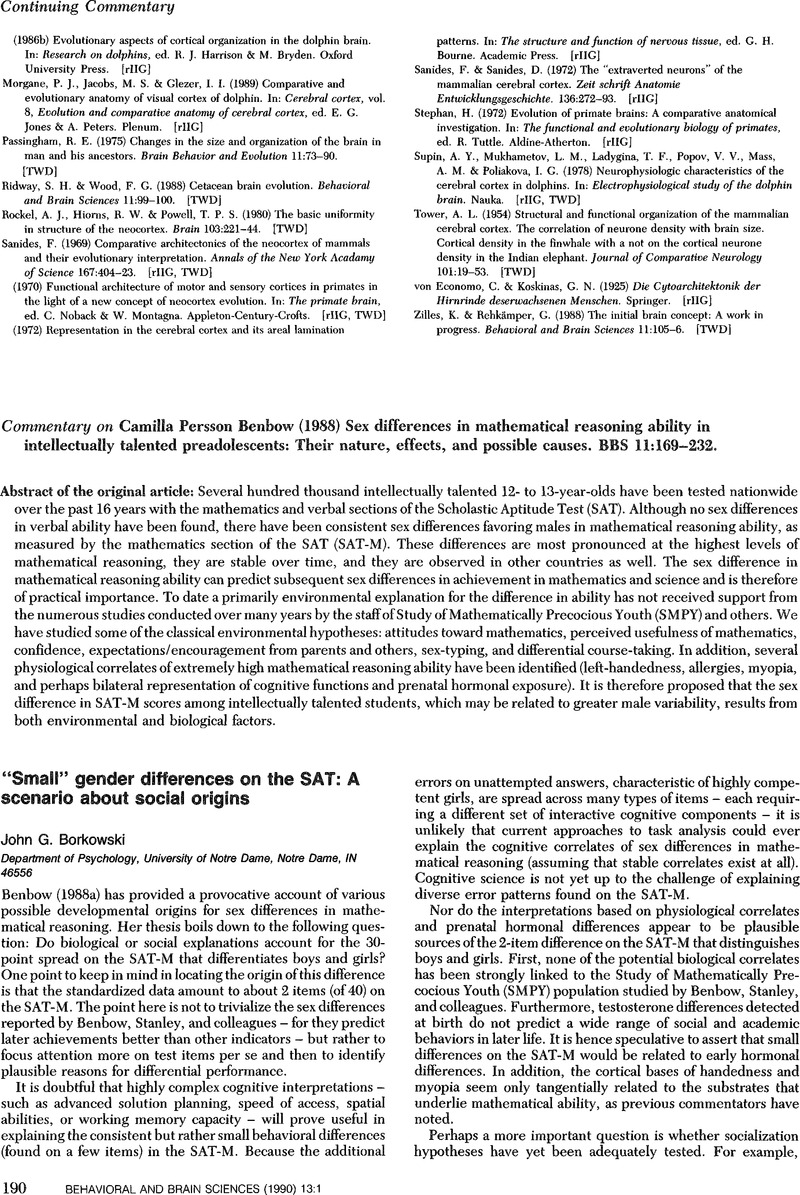Crossref Citations
This article has been cited by the following publications. This list is generated based on data provided by Crossref.
Stumpf, Heinrich
1995.
Gender differences in performance on tests of cognitive abilities: Experimental design issues and empirical results.
Learning and Individual Differences,
Vol. 7,
Issue. 4,
p.
275.
Della Sala, Sergio
and
Logie, Robert H.
1997.
Impairments of Methodology and Theory in Cognitive Neuropsychology: A Case for Rehabilitation?.
Neuropsychological Rehabilitation,
Vol. 7,
Issue. 4,
p.
367.
STANLEY, JULIAN C.
1997.
Varieties of Intellectual Talent1.
The Journal of Creative Behavior,
Vol. 31,
Issue. 2,
p.
93.
Shea, Daniel L.
Lubinski, David
and
Benbow, Camilla P.
2001.
Importance of assessing spatial ability in intellectually talented young adolescents: A 20-year longitudinal study..
Journal of Educational Psychology,
Vol. 93,
Issue. 3,
p.
604.
Stanley, Julian C.
2007.
Ciba Foundation Symposium 178 ‐ The Origins and Development of High Ability.
p.
119.





